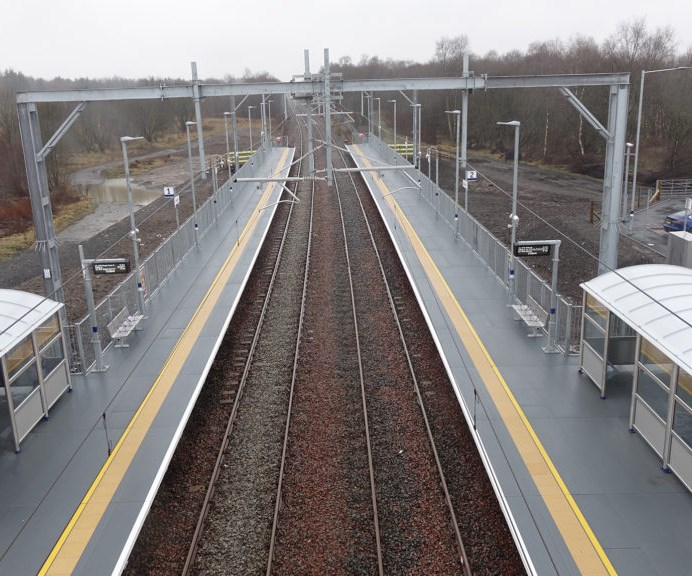GRP train station platform wins Queen’s Award for Innovation
Dura Composites’ Dura Platform is an easily installed, lightweight glass fiber-reinforced polymer alternative to concrete train platforms.

Source | Dura Composites
Composite materials firm (Dura, Clacton-on-Sea, U.K.) announced on April 21 that it has been awarded a Queen’s Award for Enterprise in the Innovation category, for the company’s pioneering rapid-deployment train station platform solution known as Dura Platform.
The Queen’s Awards are a royal seal of approval for the U.K.’s most outstanding businesses, and Dura’s 2020 award follows a win in 2017 of the Queen’s Award for Enterprise in International Trade. The awards celebrate companies that are making an exceptional contribution to enterprise, and the Innovation category honors those that have shown commercial success as a result of demonstrable innovation. Each entry is judged by a specialist panel that makes a recommendation to the Prime Minister’s Advisory Committee. The queen then decides the winners, who each receive an official grant of appointment and an invitation to a celebratory reception at Buckingham Palace.
Dura Composites’ award-winning Dura Platform is a height-adjustable composite train station platform that reduces gaps between the train and platform edge to enhance passenger safety. The platform can also be rapidly installed, reducing passenger disruption.
“The Dura Platform solution can be easily deployed to accommodate new rolling stock and improve overall safety for passengers.”
The company says that Dura Platform, with several unique patented features, enables contractors to replace or overlay a low-maintenance glass fiber-reinforced polymer (GRP) structure onto damaged or subsided train station platforms. Installed in modular sections, the GRP structure is said to be lightweight enough for lifting by hand, and enhances passenger safety with its anti-slip surface, in-built water management and concealed sub-surface fixings. Dura Platform, which the company says is quickly becoming a de-facto alternative to traditional concrete, is designed to be easy to deploy in hard-to-reach station sites where large cranes or heavy machinery cannot be used.
“The gap between the U.K.’s trains and platforms is getting bigger, with new carriages making it harder than ever for passengers trying to board and disembark trains – particularly those with limited mobility or visual impairments,” says Stuart Burns, Dura Composites’ managing director. “The Dura Platform solution can be easily deployed to accommodate new rolling stock and improve overall safety for passengers, and this award serves as great recognition of the innovation and true problem-solving that’s at the heart of everything we do at Dura Composites.”
Related Content
-
Welding is not bonding
Discussion of the issues in our understanding of thermoplastic composite welded structures and certification of the latest materials and welding technologies for future airframes.
-
The potential for thermoplastic composite nacelles
Collins Aerospace draws on global team, decades of experience to demonstrate large, curved AFP and welded structures for the next generation of aircraft.
-
Low-cost, efficient CFRP anisogrid lattice structures
CIRA uses patented parallel winding, dry fiber, silicone tooling and resin infusion to cut labor for lightweight, heavily loaded space applications.
.jpg;width=70;height=70;mode=crop)





